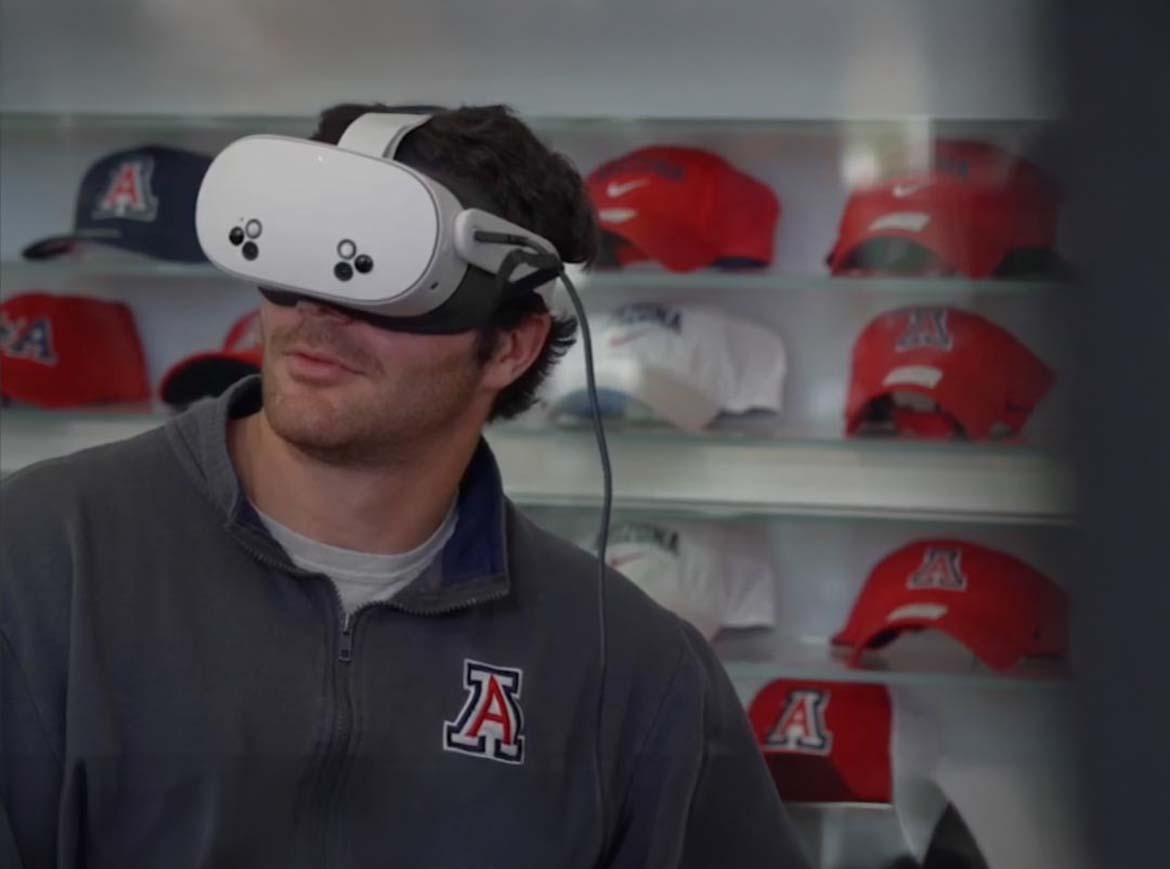Virtual Shopping Experience with VR Headset
Image: © University of Arizona | Image editing: Ulrich Buckenlei
Immersive Learning for the Retail of the Future
The University of Arizona demonstrates how the future of retail can be trained: Through Virtual Reality, real sales experiences are simulated and made tangible. Students use VR headsets to virtually enter real store layouts and understand customer behavior. Products and shelves are precisely replicated based on real data. This immersive approach is revolutionizing traditional retail training.
- Realistic Scenarios: Training based on real product data and spatial concepts.
- Direct Experience: Instead of theory, students experience practical sales situations.
- Use of Technology: Leveraging XR, AI, and digital twins for immersive learning.
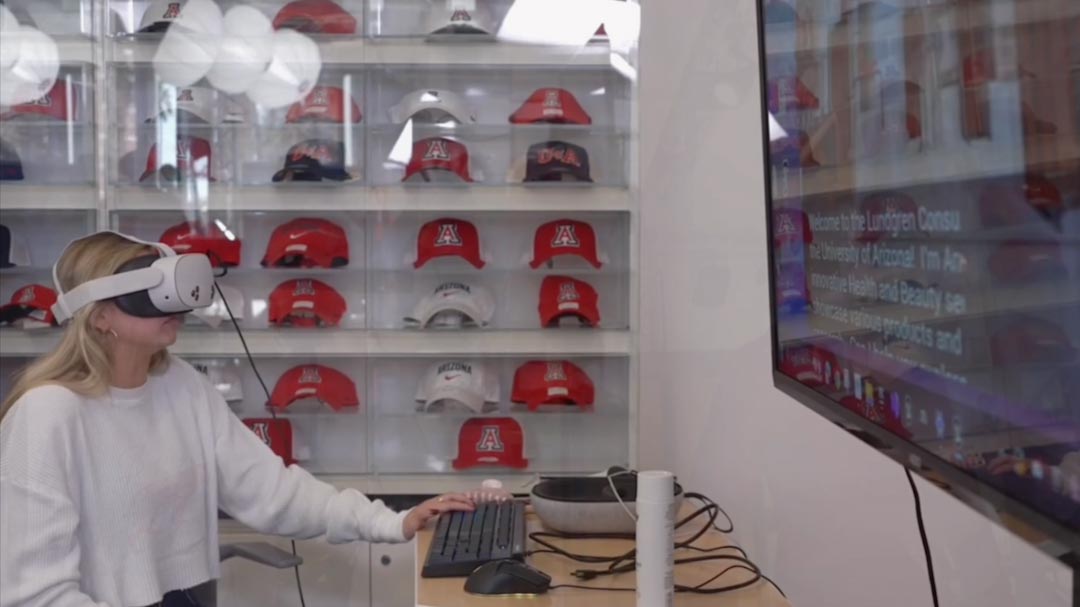
Virtual Shopping Experience with VR Headset
Image: © University of Arizona | Image editing: Ulrich Buckenlei
Through the virtualization of real sales spaces, students can not only test store layout concepts but also develop new strategies for customer engagement. Every change in store layout becomes immediately visible and understandable — a true boost to the training of future retail professionals.
Live Teaching in the Omnichannel Lab
In the real-life teaching environment at the University of Arizona, physical and virtual worlds merge. Students analyze store concepts, discuss designs, and test interactive sales scenarios live on-site. They access sensor data, 3D models, and AI-powered forecasts in real time.
- Direct Knowledge Transfer: From theory to practice within one session.
- Multidisciplinary Perspectives: Connecting marketing, design, technology, and consumer behavior.
- Real-Time Analysis: Utilizing AI evaluations during simulations.
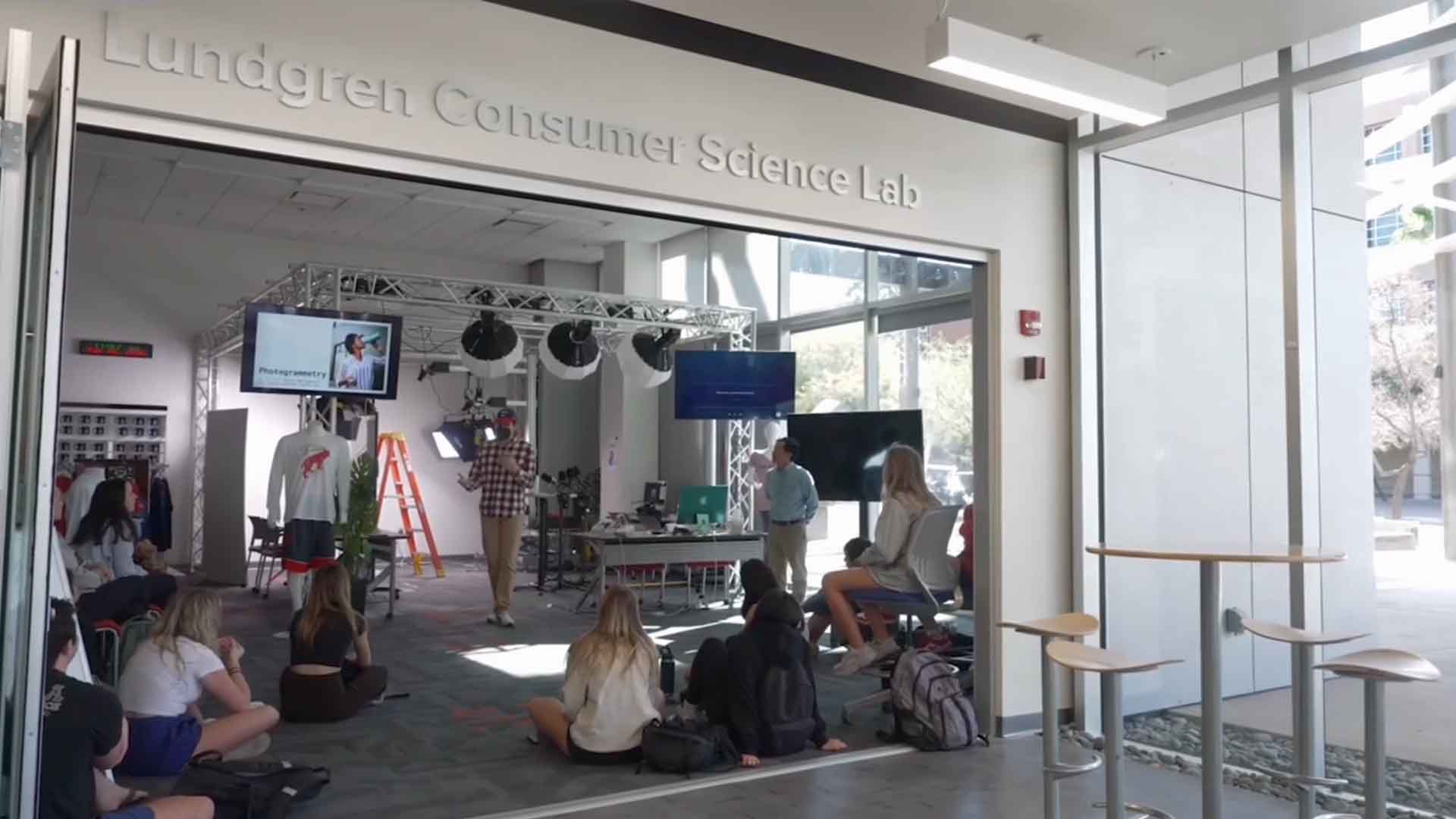
Live Teaching in the Omnichannel Lab at the University of Arizona
Image: © University of Arizona | Image editing: Ulrich Buckenlei
The Omnichannel Lab is not just a training area but a real innovation hub. Here, ideas for tomorrow’s retail emerge, tested and improved through immediate application.
Virtual Health and Beauty Experiences in the Digital Twin Store
A highlight is the construction of realistic product worlds in virtual space. Health and beauty assortments are recreated based on real shelf structures and consumer data. Students learn to strategically place assortments and virtually test purchase incentives.
- Highly Detailed Representation: Real product packaging and designs are recreated.
- Behavior Analysis: Capturing digital interactions with products.
- Optimization Potential: Simulation of assortment changes in real time.
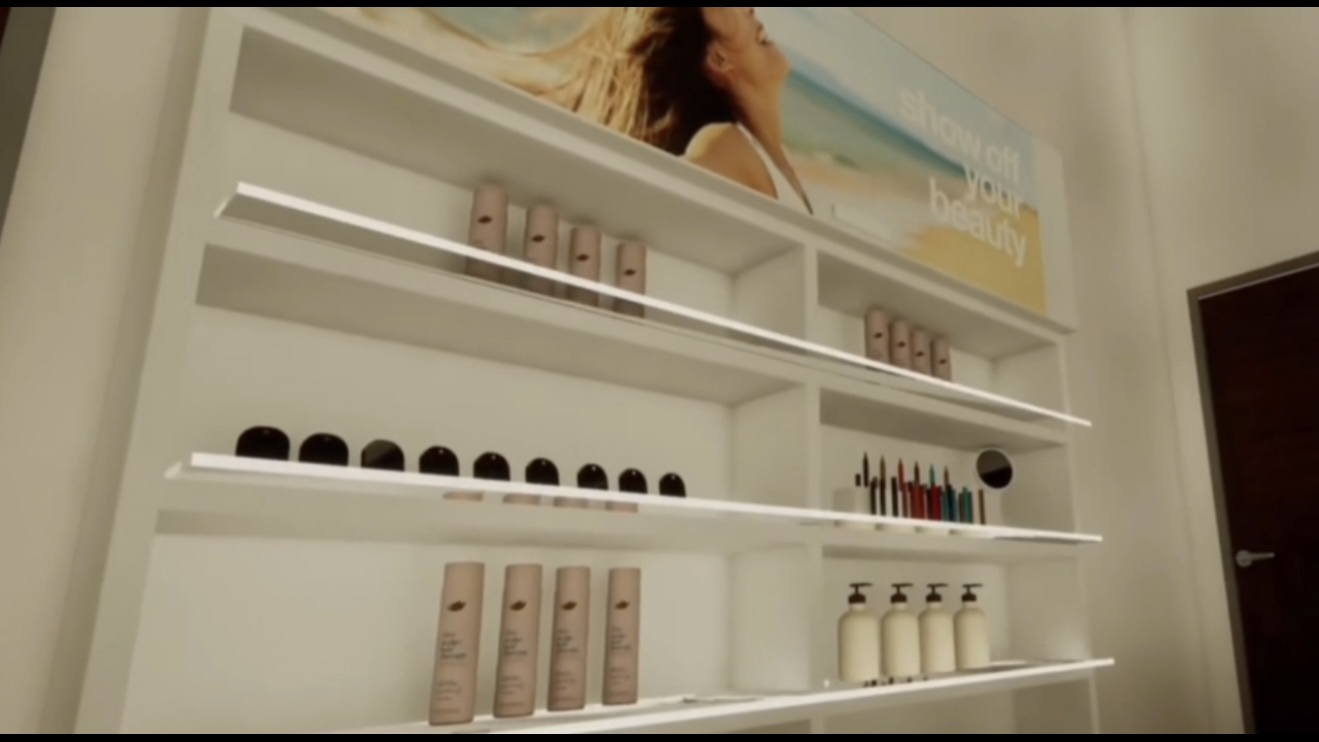
Virtual Health and Beauty Shelf in the Digital Twin Store
Image: © University of Arizona | Image editing: Ulrich Buckenlei
With these immersive models, customer behavior can be studied under realistic conditions. Companies gain valuable insights without costly pilot projects in physical retail.
Artificial Intelligence as a Sales Consultant
Another innovation is the use of AI-powered avatars. These digital shopping assistants respond to inquiries, analyze preferences, and simulate sales conversations. Students experience how AI systems could revolutionize customer interaction.
- Voice Control: Avatars respond to natural language input.
- Personalized Recommendations: Simulation of individual consultation conversations.
- Data Analysis: Analyzing user interactions to optimize AI logic.
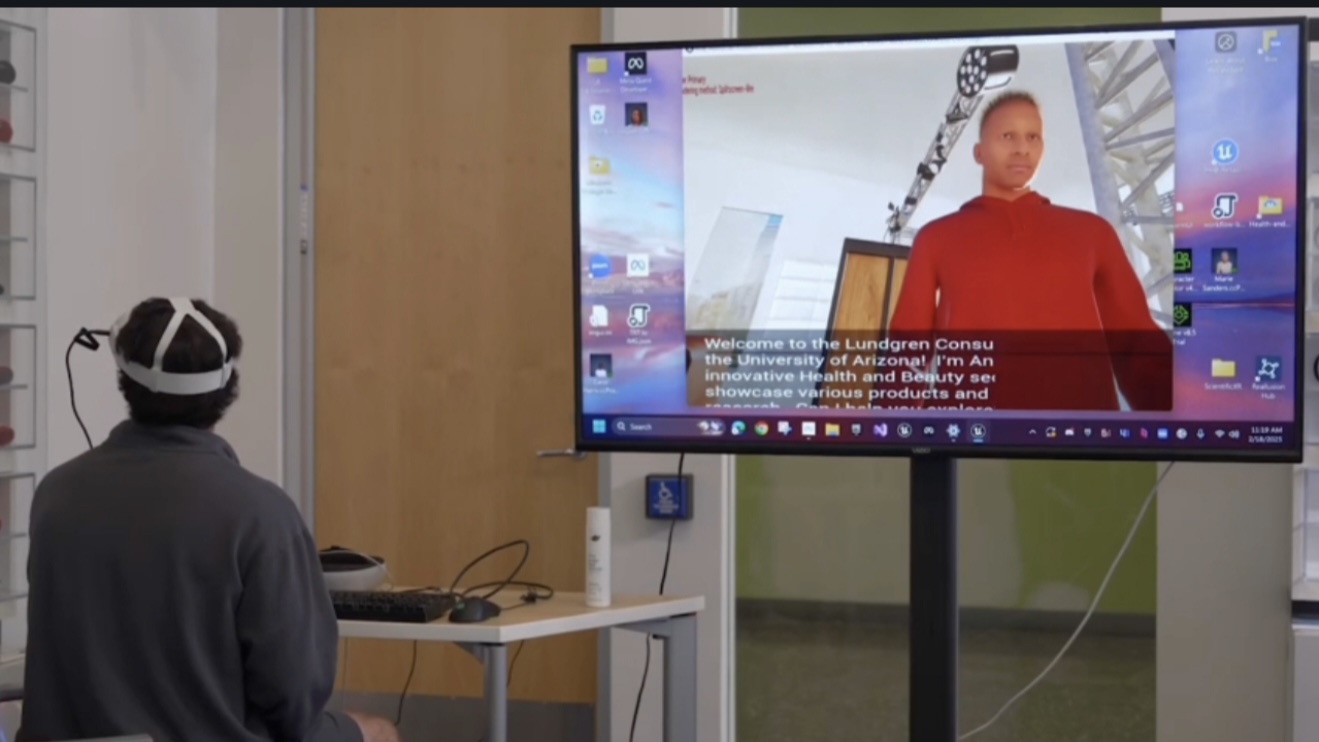
AI-Powered Avatar as Shopping Assistant
Image: © University of Arizona | Image editing: Ulrich Buckenlei
The avatar allows for the testing of various communication styles and exploring new approaches for omnichannel retail. Exciting ideas for the future of customer service emerge from this.
Digital Product Capture: The 3D Scanning Process
To create realistic virtual stores, real products must be transformed into digital twins. Students use modern 3D scanning technologies that precisely capture surfaces, dimensions, and structures.
- Precise Data Capture: Every detail of the physical products is recorded.
- Fast Digitization: Efficient processes for creating virtual catalogs.
- Versatile Applications: From online shops to VR training.
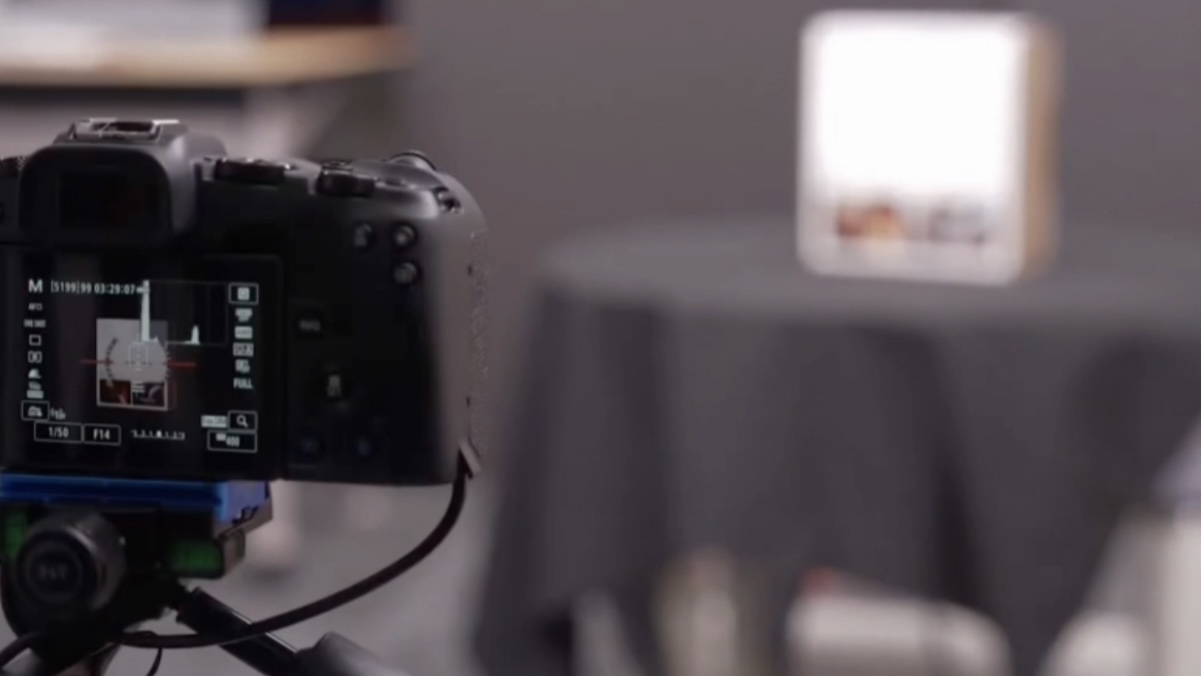
Creation of 3D Scans of Real Products
Image: © University of Arizona | Image editing: Ulrich Buckenlei
The scanning process is the foundation for the authenticity of virtual stores. Without high-quality scans, realistic training scenarios would not be possible.
Creation of 3D Scans of Real Products
Using professional camera technology, students at the University of Arizona capture real products with high precision. Each object is digitized to create an authentic basis for virtual environments. The detailed scans allow products to be presented and interacted with accurately in digital space. This method forms the technical foundation for building immersive retail training and virtual stores.
- Highly Accurate Capture: Real products are digitized as detailed 3D models.
- Optimized for VR and XR: Scans are specifically tailored for use in immersive learning environments.
- Use in Simulations: The models are used directly in practical training scenarios.
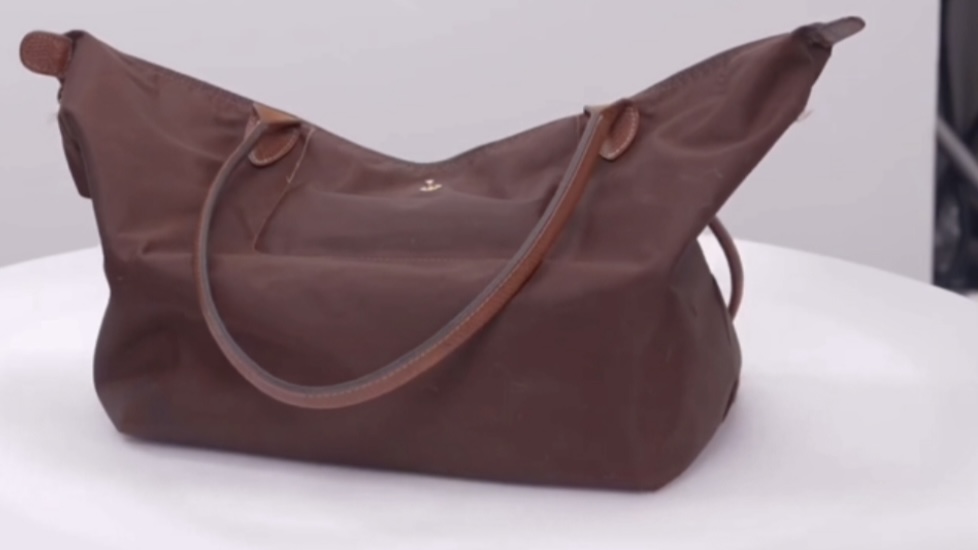
Creation of 3D Scans of Real Products
Image: © University of Arizona | Editing: Ulrich Buckenlei
The high-resolution 3D models are the key resource for realistic virtual sales areas. They make products tangible and enable even more authentic immersive training.
Product Photography for 3D Modeling
Precise photography of individual products like handbags takes place in specially lit environments. The goal is to accurately capture every detail — from material textures to fine seams. This results in comprehensive 3D models enabling realistic presentations in virtual stores. The combination of photogrammetry and AI-supported optimization ensures impressive detail accuracy.
- Attention to Detail: Even small textures and materials are captured authentically.
- Photogrammetry and AI: Advanced techniques enhance model quality.
- Flexible Use: Models can be used in various VR and AR applications.
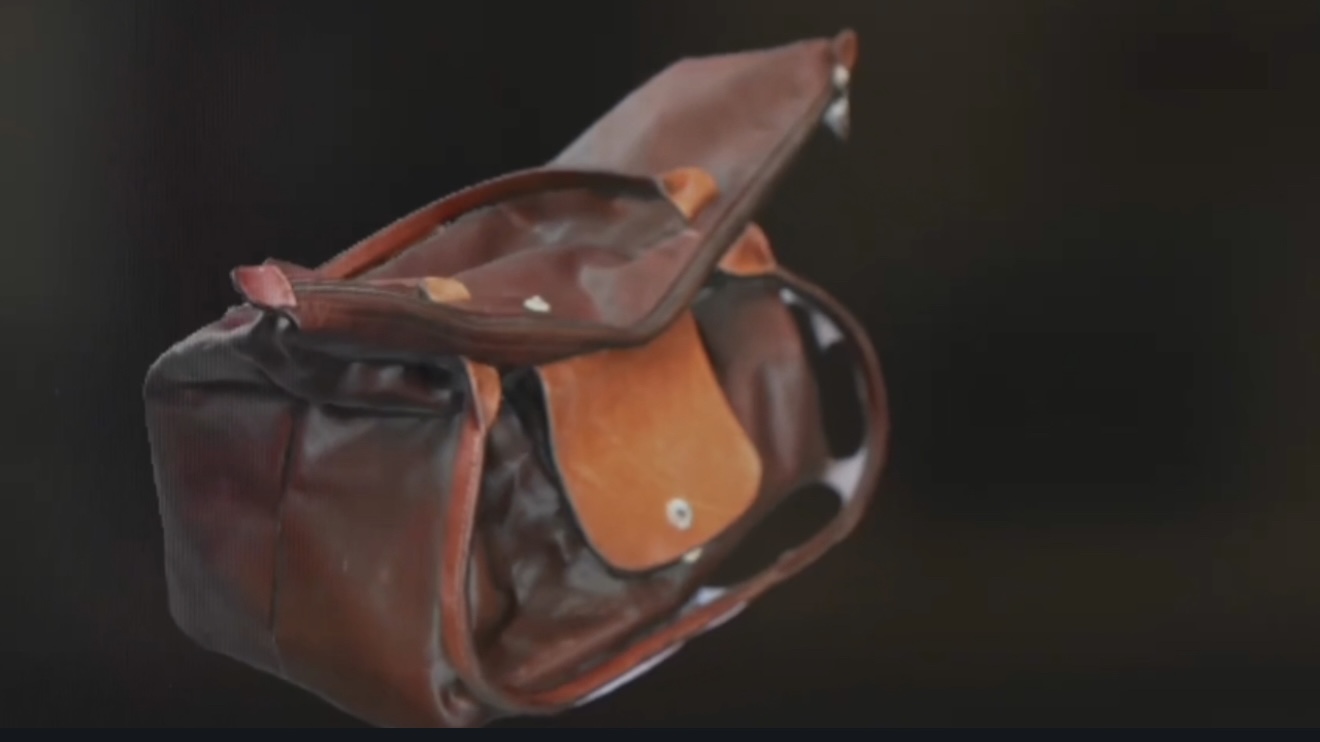
Product Photography for 3D Modeling
Image: © University of Arizona | Editing: Ulrich Buckenlei
This technique paves the way for quickly and efficiently making complete product portfolios available in virtual environments.
Finished 3D Object in Virtual Reality
After modeling, the products are integrated into the virtual environment. Students can view, rotate, scale, and even place the 3D objects in different store layouts. This practical interaction not only deepens the understanding of product presentations but also fosters the development of new retail concepts.
- Interactive Presentation: Products can be moved and examined in real time.
- Practice-Oriented Training: Students simulate real sales floors and customer interactions.
- Creative Store Design: Allows experimentation with new layouts and design ideas.
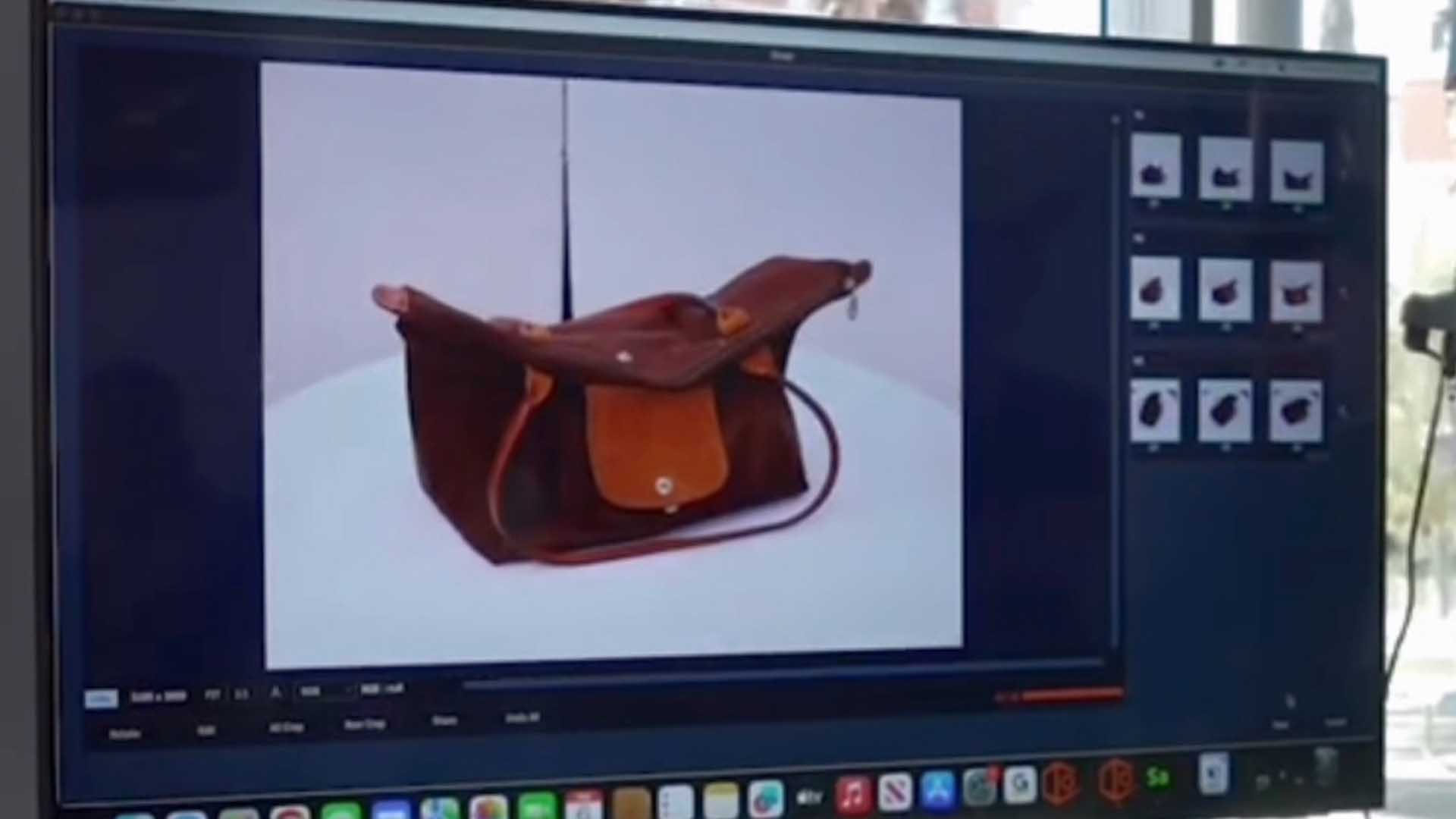
Finished 3D Object in Virtual Reality
Image: © University of Arizona | Editing: Ulrich Buckenlei
With these capabilities, the virtual store becomes not only a training platform but also a creative experimentation ground for innovative retail strategies.
Infographic: Future of Immersive Learning in Retail
The following infographic shows how immersive technologies such as XR, AI, and Digital Twins work hand in hand to redefine retail training. From capturing real products to analyzing customer movements in virtual space: the entire cycle is optimized for practice-oriented, data-driven learning.
- Experience-Based Learning: Students actively immerse themselves in virtual commerce worlds.
- Integration of AI: Real-time analysis and intelligent assistance systems optimize the learning effect.
- Integration of Physical and Virtual Worlds: Seamless interaction between product, space, and data flow.
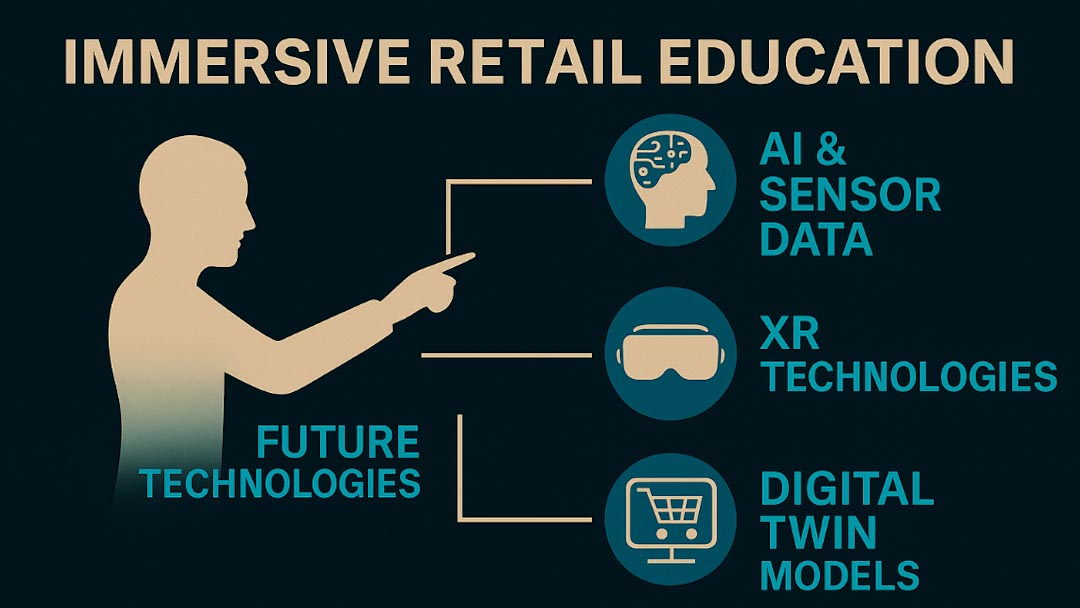
Future of Immersive Learning in Retail
Image: © Ulrich Buckenlei
This graphic illustrates how technologies work together to fundamentally transform and make retail training practice-relevant.
Hands-on Application by Students
In the final step, students apply their knowledge by actively interacting with the virtual store setup. They design shelves, optimize assortments, and simulate customer movements to directly experience the impact on sales and customer satisfaction. This hands-on approach ideally prepares them for the challenges of the digital retail world.
- Hands-on Learning: Theoretical knowledge is immediately applied practically.
- Direct Success Measurement: The effects of layout changes can be analyzed instantly.
- Encouragement of Creative Problem-Solving: Students develop innovative concepts for the future of retail.
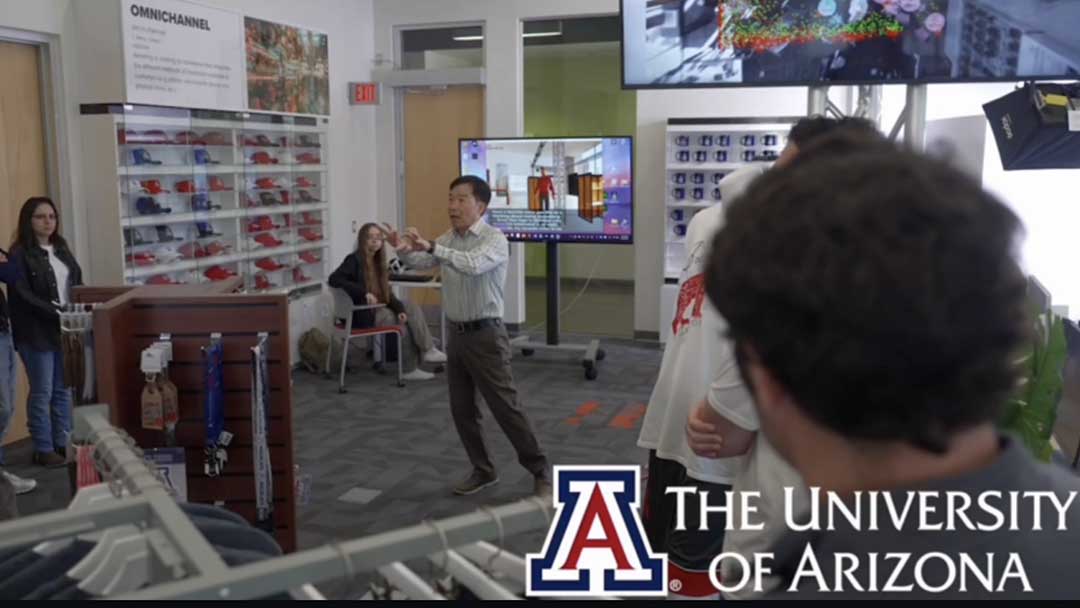
Hands-on Application by Students
Image: © University of Arizona | Editing: Ulrich Buckenlei
It becomes clear: The future of retail is not only being shaped in theory — but also in the virtual labs of innovative universities.
The Video on the XR Learning Environment
The following image serves as a poster frame for the accompanying video showcasing immersive retail education at the University of Arizona. It offers fascinating insights into the connection between practice, research, and new technologies.
Future of Retail: XR Learning Lab at the University of Arizona
Image: © University of Arizona | Editing: Ulrich Buckenlei
Contact Us:
Email: info@xrstager.com
Phone: +49 89 21552678
Contact Persons:
Ulrich Buckenlei (Creative Director)
Mobil +49 152 53532871
Mail: ulrich.buckenlei@xrstager.com
Nataliya Daniltseva (Projekt Manager)
Mobil + 49 176 72805705
Mail: nataliya.daniltseva@xrstager.com
Address:
VISORIC GmbH
Bayerstraße 13
D-80335 Munich


